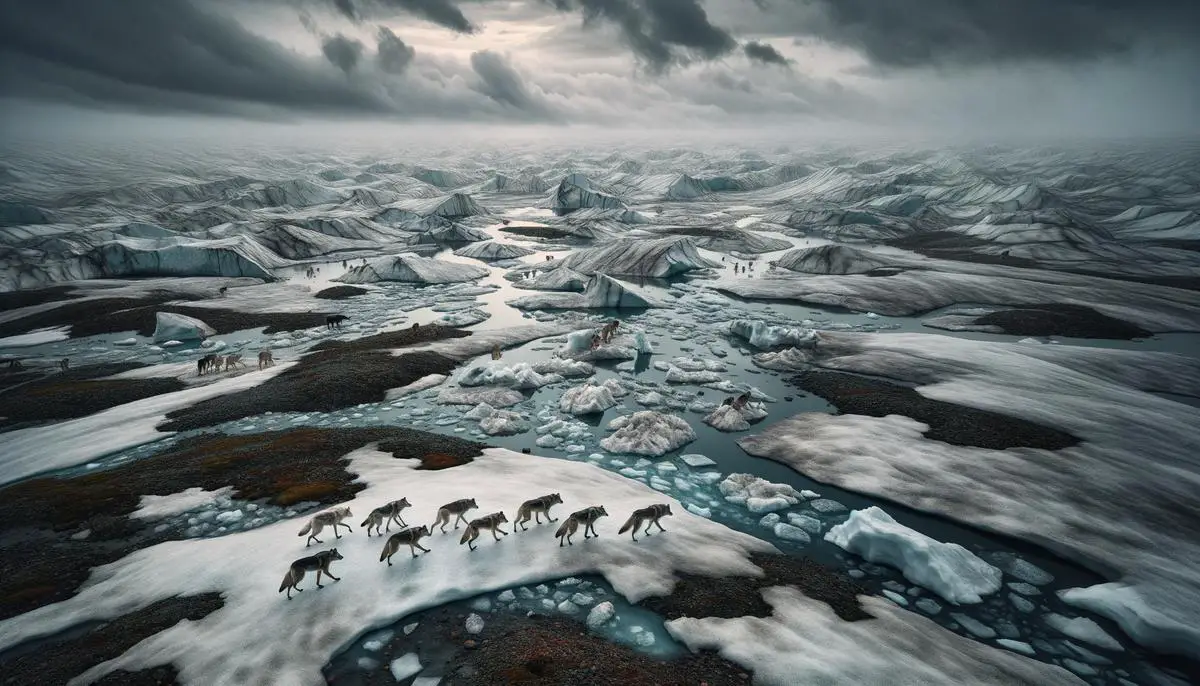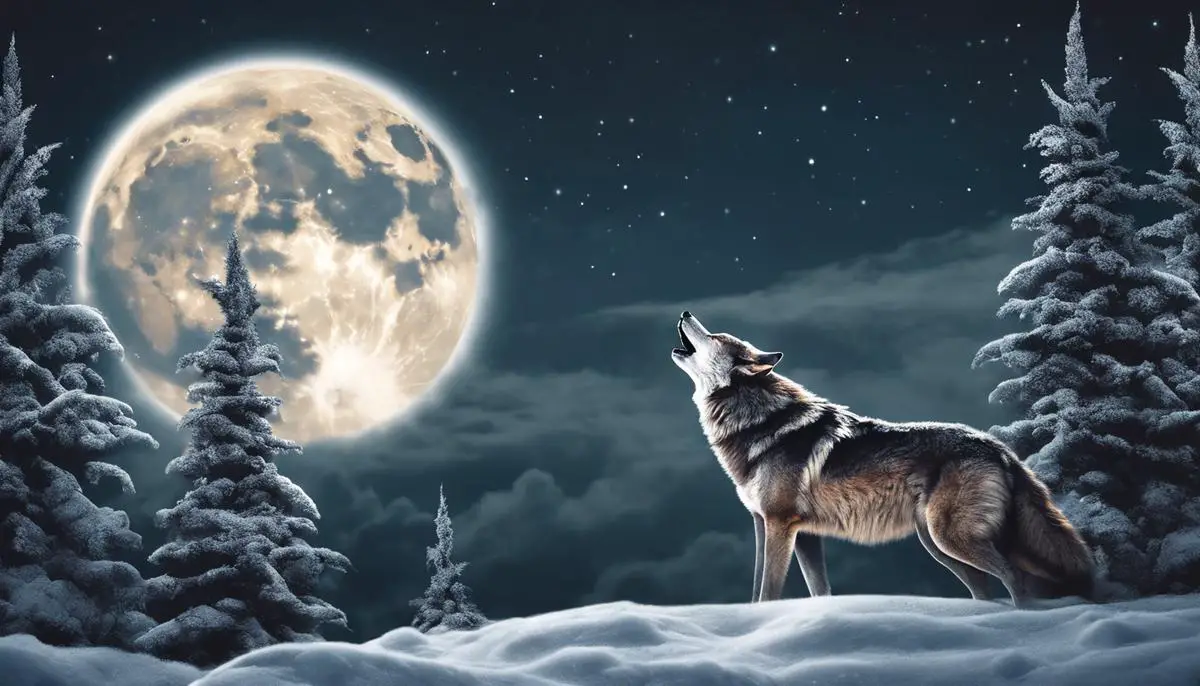The Wolf Moon, with its rich tapestry of cultural and natural significance, serves as a window into the intricate relationship between humanity and the celestial bodies that illuminate our night sky. This article sheds light on the multifaceted interactions between wolves and their environment, revealing how these majestic creatures, and by extension, we humans, are deeply intertwined with the rhythms of the natural world.
Wolf Moon Origins
The Wolf Moon, an evocative name given to January's full moon, reaches back into the corners of time, intertwining with the chilling howls of wolves that punctuate the winter's stillness. These creatures, with their calls echoing through forests and across frozen landscapes, signal the commencement of a period marked by hunger and the onset of mating season. The wolf's howl functions as a vital communication tool.
Historically, both European and Native American cultures have observed these natural phenomena, coining the term "Wolf Moon" to reflect the heightened activity of wolves during this time. This naming tradition reflects the natural world's rhythms and cycles, shaping human understanding and interaction with the broader ecology.
The reason wolves are more vocal during the winter months, particularly in January, reflects practical survival strategies. Wolves howl to rally the pack, signify territory boundaries, and communicate over long distances when the pack members are scattered. This increase in howling aligns with the breeding season, necessitating more communication among wolves to ensure their pack's cohesion and continuity.
The framework of lunar names also incorporates other descriptors based on local climates and ecosystems, offering insight into how humans across different regions have adapted their lifestyles and activities to the moon's cycles. Alongside the Wolf Moon, names like the Ice Moon or the Snow Moon in other cultures highlight the lunar cycle's role in tracking seasonal changes.
Cultural stories and legends add another layer to our understanding of the Wolf Moon. These narratives often reflect values, fears, or admiration for the natural world's power and mystery. Through story and observation, ancient cultures have left a legacy that continues to influence modern perceptions of the natural world, linking us back to a time when survival more directly depended on understanding and adapting to the rhythm of the planets and their celestial dance.
This tradition of naming moons based on nature's cues remains relevant today. It gives us a glimpse into the past and serves as a reminder of humanity's enduring connection and fascination with the cosmos.
Wolf Communication
Wolves utilize howling as a versatile tool, serving various purposes within their social lives.
The melodic contours of a howl, varying in pitch and duration, are laden with specific messages, delineating boundaries, assembling scattered members, or heralding availability for mating. This acoustic signaling is crucial during the mating season, a period requiring heightened communication as wolves navigate social hierarchy and reproduction.
Within the social structure of a wolf pack, howling operates as a communal glue bonding pack members together. It signifies unity and belonging while also affirming the pack's territorial reign to potential intruders. Wolves, by vocalizing these howls, maintain the equilibrium of their social orders, ensuring that despite vast territories or inclement winter conditions, they remain connected.
This period of amplified howling aligns with the breeding season, where wolves communicate territorial borders and engage in signaling mating readiness and position within the social strata. A lone wolf's howl might pierce the night air in search of companionship, while a chorus of howls from a pack reinforces their collective strength and social cohesion.
Misconceptions have romantically linked wolves' howls to the lunar cycle, particularly the full moon. However, this picturesque scene differs from reality; wolves do not howl at the moon. Their communications are grounded in practical aspects of survival and social intricacies rather than celestial bodies.
Understanding wolf howling—its purposes and the myths surrounding it—bridges our world with theirs. It reveals the profound link between these creatures and the environment they navigate. As we delve deeper into the social dynamics of wolves, especially during the breeding season, we uncover scientific truths and develop a greater empathy for these complex beings. Their howls resonate with a frequency that touches the core of wilderness itself, reminding us of the unfathomable depths of nature's language.
Impact of Climate on Wolf Behavior
As our planet undergoes climate transformations, the effects on wildlife behavior, including that of wolves, become increasingly pertinent. Climate change, with its implications for ecosystems worldwide, leaves a mark on the social and behavioral patterns of wolves, particularly during their mating season.
The arctic and boreal habitats, where many wolf populations reside, are among the most vulnerable to climate-induced alterations. Shifting weather patterns, increased temperatures, and changing precipitation rates affect the availability of prey and the integrity of habitats. These environmental stressors influence wolf populations, affecting their food sources and, consequently, their social dynamics and communication practices.1
Seasonal changes, precursors to mating behaviors, are becoming less predictable due to climate change's erratic nature. Traditional cues that wolves relied on to initiate the onset of the breeding season may be disturbed, leading to altered timing or patterns in mating behavior. Such mismatches can impact wolf pack dynamics and the survival rate of offspring, as the synchronicity between birth periods and optimal conditions for rearing young becomes disrupted.
As wolves expand their territories in search of food due to altered prey distributions, this necessitates an increase in communicative efforts. Howling plays a crucial role in reassembling scattered pack members and delineating newly claimed territories amidst the changing landscapes. These shifts in social interactions and territory boundaries underscore the adaptability of wolf populations to maintain cohesion and survival strategies under duress.
Research sheds light on how wolves might be adjusting their reproductive strategies in response to climate change. Initial findings suggest some wolf populations may breed earlier or later than usual, attempting to time the arrival of their young with favorable environmental conditions, despite the unpredictability these conditions now present.2 This adaptation showcases the resilience of wolves, attesting to their capacity to respond to rapid environmental changes.
The impact of climate on wolf behavior also highlights the importance of human efforts to mitigate climate change and support the stability of wildlife populations. Conservation measures that preserve natural habitats, alongside global attempts to curtail the spread of climate change, are crucial in ensuring that wolves and the ecosystems they inhabit continue to thrive.
The dance between wolves and their environment becomes more complex in the face of climate change. Understanding this intricate interplay highlights the resilience of these creatures and emphasizes the profound connection between all living beings and the health of our planet. As we strive to unravel and navigate these impacts, the story of wolves adapting to shifting climates stands as a compelling narrative in the discourse on climate change and biodiversity conservation.

The narrative of the Wolf Moon and wolf communication underscores a profound truth: our lives and those of the wolves are linked to the health of our planet. As we witness these creatures adapt to the challenges posed by a changing climate, their story becomes a reminder of the resilience of nature and the importance of our role in preserving it for future generations.
- Post E, Forchhammer MC, Bret-Harte MS, et al. Ecological dynamics across the Arctic associated with recent climate change. Science. 2009;325(5946):1355-1358.
- Milleret C, Wabakken P, Liberg O, Åkesson M, Flagstad Ø, Andreassen HP. Let's stay together? Intrinsic and extrinsic factors involved in pair bond dissolution in a recolonizing wolf population. Journal of Animal Ecology. 2017;86(1):43-54.
![]()
